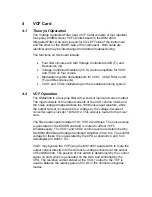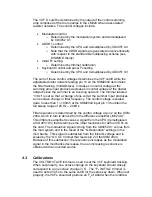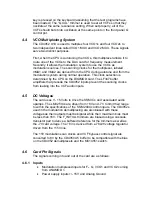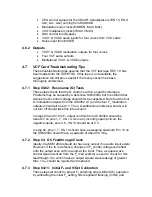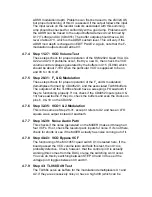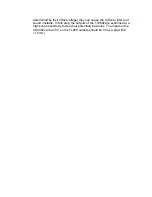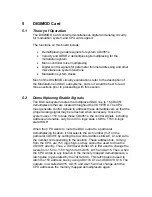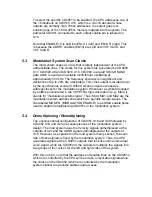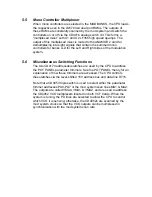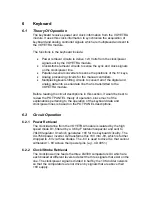
them on the MIXER CARD at the points called VOLUME L, R. The
Master Volume Pot is routed to the JACK BAY for processing by the
external Volume Pedal, and then routed to the MIXER CARD to the point
labeled MASTER VOL. These control signals are multiplied by VCAs that
convert them to control currents used to derive the volume/noise gate
VCAs as illustrated on the schematic.
The A440 tone comes from the DAC CARD and is turned off by the CPU.
It is injected into the system audio by an inverter transistor designed to
eliminate the digital noise that is present on all DAC CARD signals.
2.3 Headphones
The outputs of the VCA subchannel mixers are routed to another VCA,
followed by an opamp used as a headphone driver. The front panel
Headphone Volume control is used to send a control voltage to this VCA
to set the headphone volume.
2.4 Noise
The noise source is generated by an MM5837 digital noise generator.
This output is sent to two VCAs which set the noise L, R volume, and
whose outputs are routed to the VCF cards L & R. The noise is also
passed through a low pass filter whose low frequency noise output is
routed to the ANAMOD 1 CARD for use as a controller in the Modulation
System.
2.5 Calibrations
Any VCA will have a certain amount of DC feedthrough from its control
input to the output which causes an output signal that follows the DC
control signal. This sounds like a “thumping” or “clicking” when fast attack
and release ADSRs are used. To compensate for this, each VCA on the
MIXER CARD has an offset adjustment trimmer which must be set for
minimum DC feedthrough. This includes eight voice VCAs and two for
the Left Right output VCAs.
To assure that the voice volumes are all the same, individual channel
volume trimmers are also adjusted.

















